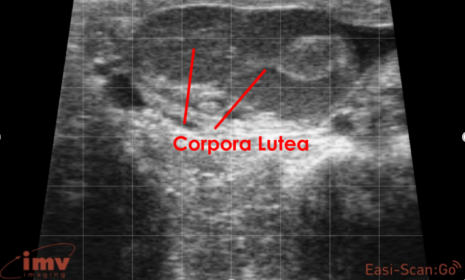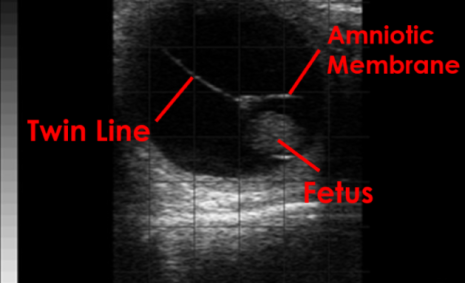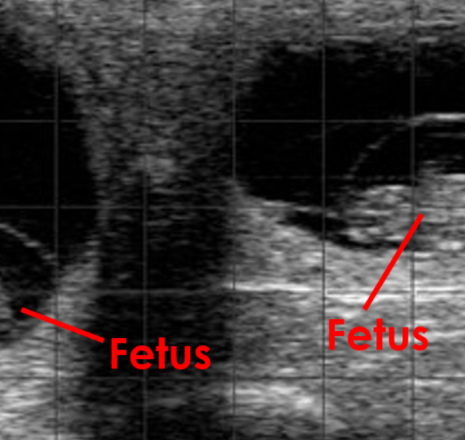Identification of twins in cows
You can optimize herd management decisions through the early detection of twins.
Cows carrying twins can be more prone to abortion, dystocia, and post-partum problems such as a retained placenta.
Therefore, the early identification of twin pregnancies is important as additional monitoring can be instigated and management of the individual cow carrying twins can be changed before, during and following parturition.
Using ultrasound to correctly identify twin pregnancies relies on a thorough examination of the entire reproductive tract. This includes evaluation of the ovaries for evidence of multiple corpora lutea (Figure 1.). If multiple corpora lutea are found, then special care should be taken to evaluate the uterus for evidence of twins.
Figure 1. Two Corpora Lutea on One Ovary. In this image of an ovary, two Corpora Lutea are present, indicating that a double ovulation has occurred.

By evaluating the uterus using ultrasound, twin fetuses may be identified (Figure 2.) and fetal viability can be assessed through visualisation of the fetal heartbeat and examination of the fetal membranes and fluids.
Figure 2. Twin Pregnancy. In this image two separate fetuses can be seen.
Ultrasound examination of the fetal membranes may also reveal the presence of a “twin line”. This represents the shared chorioallantoic membrane between the two fetuses and appears as a hyperechoic line that can be traced away from one or both fetuses (Figure 3.). If a twin line is present, then a thorough examination for twins should be undertaken.

Figure 3. Twin Line. In this ultrasound image, a twin line can be visualised moving away from the fetus.
Where twins are identified, it is important to follow up any initial evaluation with a further examination after day 60 of gestation. This allows further assessment of fetal viability and helps establish if loss of one or both fetuses has occurred. By confirming the twin pregnancy at this stage, the timing of drying off can be decided and arrangements for feeding at drying off can be made.
Further Reading
DeCôteaux L., Colloton J., Gayrard V., Picard-Hagen N. (2010) Chapter 6: Bovine Pregnancy In: Practical Atlas of Ruminant and Camelid Reproductive Ultrasonography., Eds: DeCôteaux L., Gnemmi G., Colloton J. 1st Edn., Wiley-Blackwell, Iowa, pp 81 – 99
López-Gatius F., Andreu-Vázquez C., Mur-Novales R., Cabrera V.E., Hunter R.H.F. (2017) The dilemma of twin pregnancies in dairy cattle. A review of practical prospects. Livestock Science. 197: 12-16
